By Salah Aldin Falioun
Muslims around the world had been expecting the beginning of the holy month of Ramadan by almost mid-April to start their fasting and spiritual journey in a month that has many spectacular aspects and local-specific traditions and culture.
Not different from their brothers and sisters in faith, Muslims in Japan -both nationals and residents- had been longing for Ramadan with all the practices, good deeds, charity giving, sharing food, and the sense of a community.

Ramadan in Japan used to be a very nice portrait of multiculturism and diversity. Many activities used to be held by the Muslim community and also for them -by Japanese officials and governorates- like the series of “Iftar Party” events that had been held by the governor of Tokyo since 2005; this series and its positive atmosphere were crowned by the latest one in May 2019 where Ambassadors and Representatives of 47 Islamic Countries in Tokyo were invited, and the governor of Tokyo, Mrs. Yuriko Koike, announced that she will do her best to let Muslims experience best stay in Tokyo, especially during Tokyo Olympic 2020, without any worries.

However, all of this changed with the outbreak of COVID-19 later that year; a lot of restrictions and concerns reshaped the experience of Ramadan to all Muslims broadly including the Muslim community in Japan.
What are Ramadan and Eid Al-Fitr anyways? What were the usual ceremonies and traditions of it in the Muslim world? How did the Muslim community use to experience them in Japan? And what changed with COVID-19? Let’s address these aspects and more!
WHAT ARE RAMADAN AND EID AL-FITR?
Ramadan is a month in the Islamic -lunar- calendar; the lunar year is usually 11 days shorter than the Gregorian -solar- calendar, and each one of the lunar months is 29 or 30 days where the beginning and end of the month is determined by observing the moon phases.
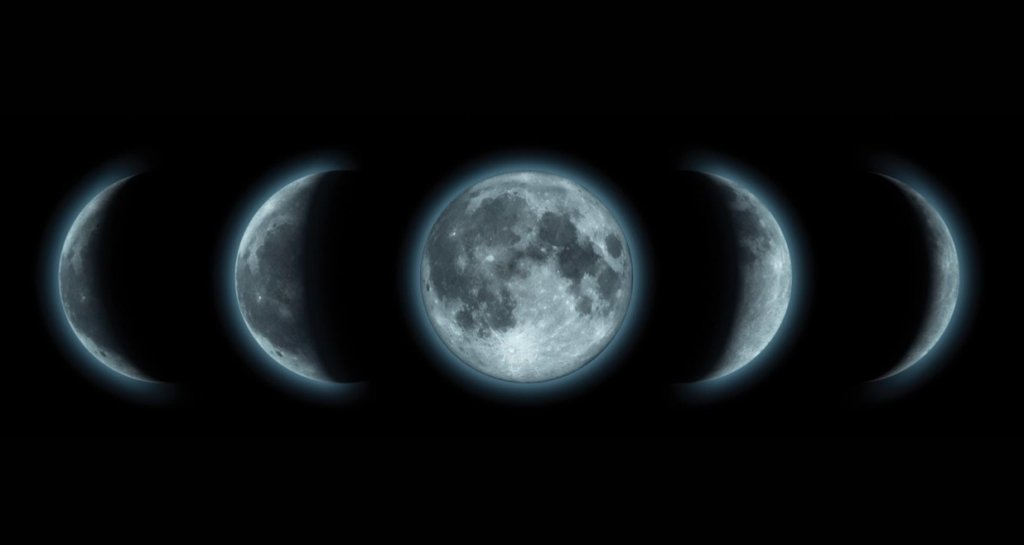
The full-month fasting of Ramadan is the third pillar of the 5 pillars of Islam, and it comes after Saying the Shahada (Which can be translated into “I bear witness that there’s no God except for Allah, and that Mohammad is his messenger”), and praying the five daily prayers.
From dawn to sunset, adherent Muslims start fasting, which means no food, no drinks (including water), no smoking, and no intercourse between married couples.
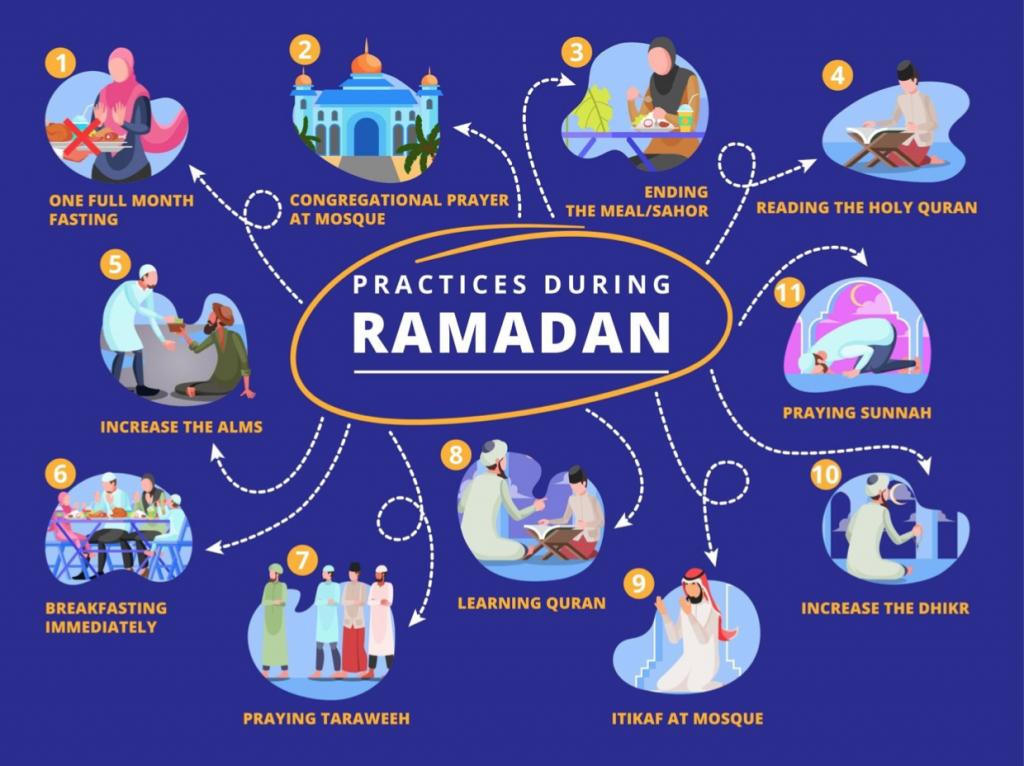
This type of worship is highly rewarded by God, as it’s only between the worshiper and him; anybody can fake to be fasting in front of other people and secretly have something to eat or drink during the course of a day.
This process of fasting for a lunar month includes many beautiful meanings; it teaches patience and humbleness while pulling us out of materialism and consumerism, guiding Muslims to really focus on the inside and what really matters in life.
It’s also a physical rehabilitation process, allowing us to reflect and control our food and drinking habits, detoxicate from unhealthy things, and giving our digestive system a break and a chance to get rid of accumulative impurities and harmful toxins.
The cherry on top is to feel for the poor by experiencing hunger and deprivation of food and water, this is perfectly consistent with the “Zakat Al-Fitr”, a food donation that adherent Muslims must give to the less privileged people -before Eid Al-Fitr congregational prayer-.
Then comes Eid Al-Fitr, which means “The Ceremony of Breaking the fasting”; celebrating this spiritual and physical journey, and hoping that God accepts the good deeds done during the month.
Mutual Habits in the Muslim world
Usually Muslims -and besides the spiritual preparation for the month- start preparing for Ramadan logistically, by buying food and drinks sufficient for a month to focus on worship.
Every day -usually- starts by waking up before dawn to have a very early breakfast called “Suhoor”, and then stopping to eat and drink by the dawn and the call for Fajr prayer, and then Muslims keep fasting until sunset when they have their “Iftar” (Breaking the Fasting meal), then later at night they head to mosques to do a congregational prayer called “Tarawih” before they go to sleep.

Exchanging family invitations, and public “Iftar” used to be very common before the pandemic.
The end of the month is marked by observing the crescent of the next month on the last night, if that is witnessed then the following day will be Eid, where people gather for congregational prayer and listen to religious speech.
Some unique aspects from different Muslim countries
“MisahHaraty”
In my home country Syria, and since earlier in history clocks and alarms hadn’t been invented yet, we have “Misahharaty” which is the name given to the person who walks and beats a drum in residential areas to wake people up to eat their “Suhoor” before morning prayers while chanting or -sometimes- shouting. This figure also exists elsewhere in some other countries such as Egypt.
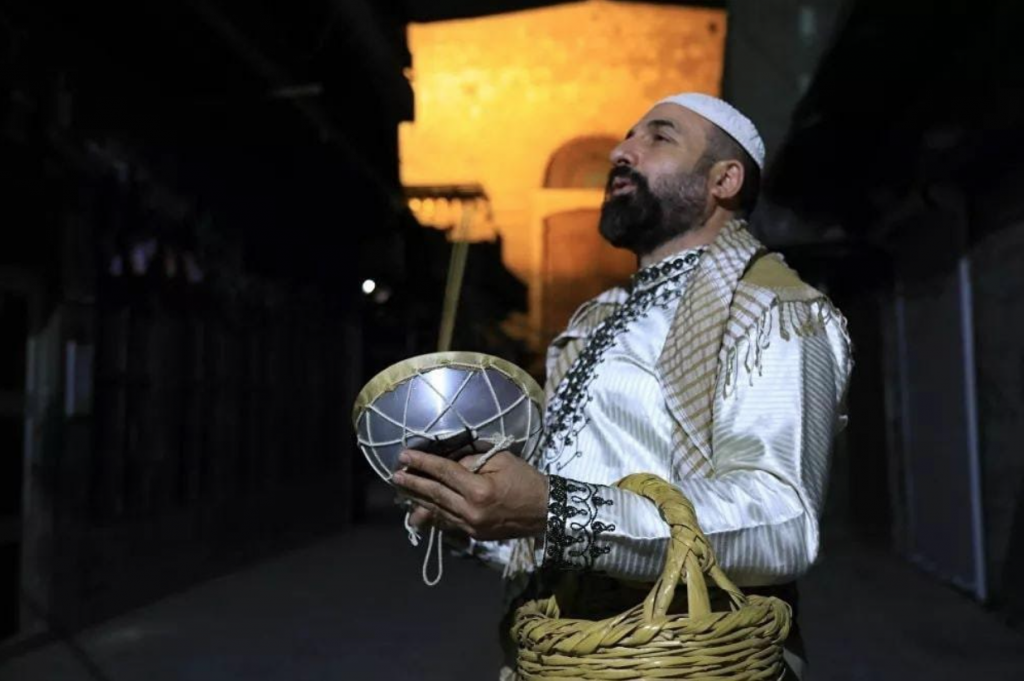
Iftar Cannon
In Syria, Lebanon, Jordan, Egypt, and elsewhere in the Middle East cannons are fired daily during the month of Ramadan to signal the end of the day’s fast. This tradition, known as “Midfa’a Al-iftar”, is said to have begun in Egypt over 200 years ago, when the country was governed by Ottoman ruler Khosh Qadam. While testing a new cannon at sunset, Qadam accidentally fired it, and the sound that reverberated throughout Cairo prompted many civilians to assume that this was a new way to signal the end of the fast. (Edited from Siobhan Ali’s piece).
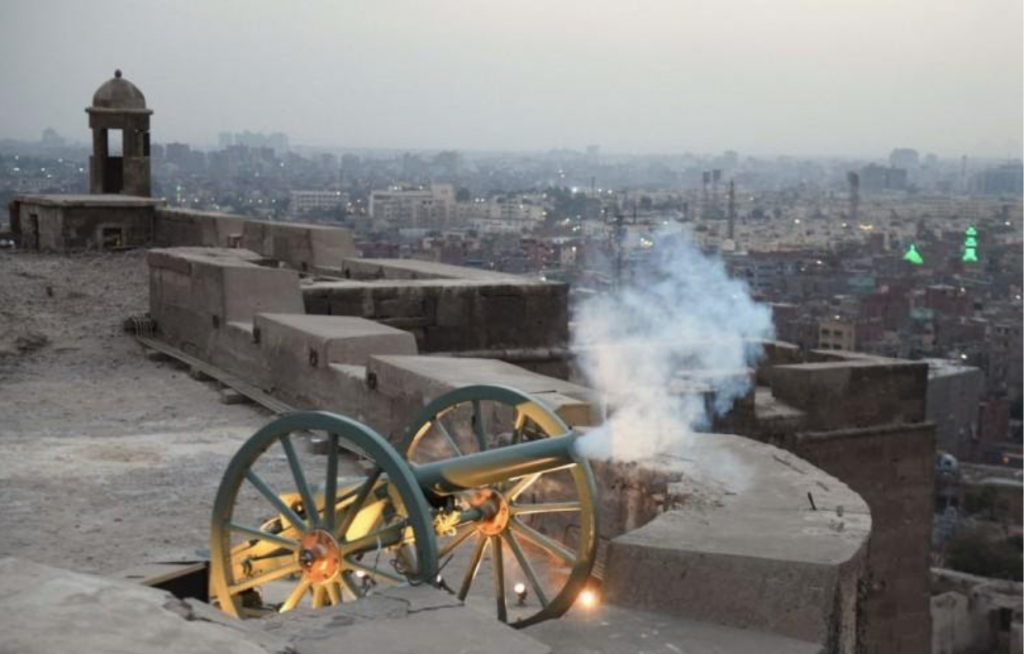
“Fanous” plur. “Fawanees”: colorful lanterns during Ramadan
Every year, the people of Egypt welcome Ramadan with colorful “Fawanees” (Sing. Fanous) – intricate lanterns that symbolize unity and joy throughout the holy month. Although this tradition is more cultural than it is religious, it has come to be strongly associated with the holy month of Ramadan, taking on a spiritual significance. (From Yosra Shohayeb’s piece)
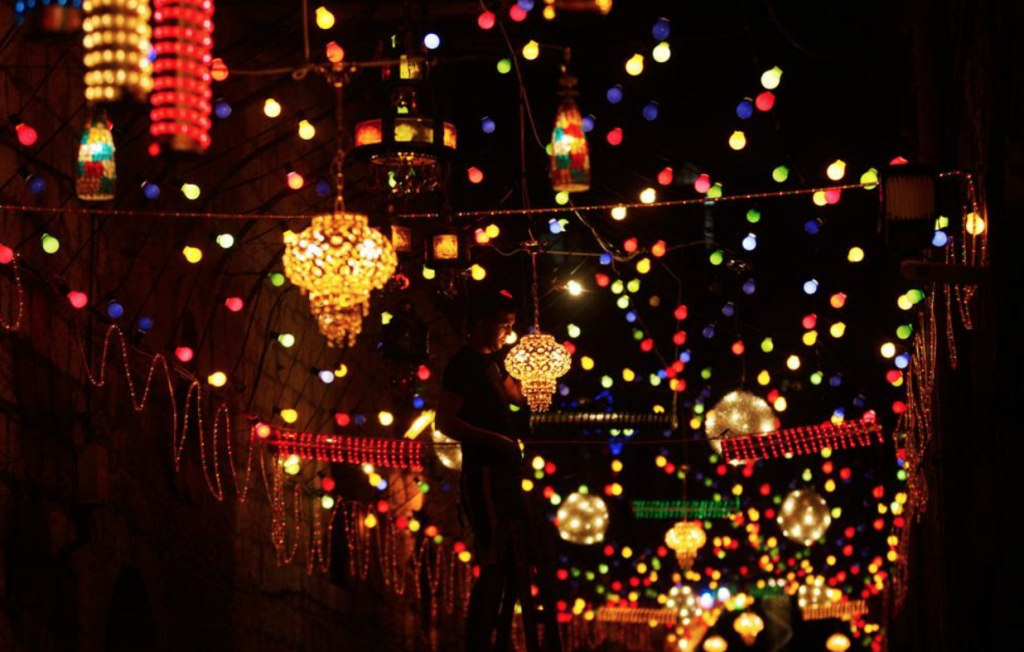
Ramadan in Japan before COVID-19
Before Ramadan starts, and likewise other parts of the Muslim World, Muslims in Japan start buying supplies of food, drinks, and groceries. A very typical place for this in Tokyo is next to Shin Okubo station, where many Halal food supermarkets operate.
Then Ramadan usually starts with an announcement made by “Ruyat-e-Hilal Committee Japan” which means: Crescent Sighting Committee, Japan. They verify the very first stage of the moon of Ramadan at night, then the announcement is to be circulated across different mosques, media outlets, Muslim organizations, and individuals.
Before COVID-19 many activities used to be held in public by and for the Muslim community, such as “Ramadan Welcome Party” events, it’s also a unique opportunity to hold seminars or introductory classes about Islam such as Islamic Cultural Center Sendai (ICCS)’s “Islam Class in Sendai”, which is an event where interested people can learn (in Japanese) about Islamic teachings, cultures, and many more, from the basics.
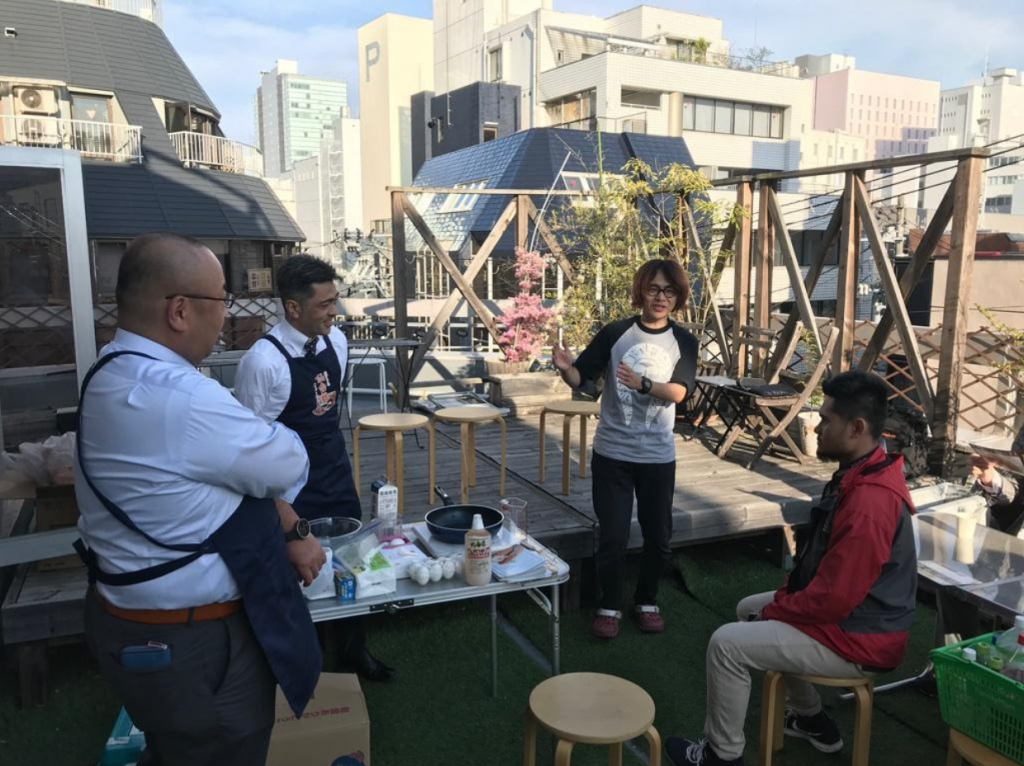
For the sake of timekeeping during the month, people trace times of Dawn and sunset, using printed or electronic Calendars, or by using some Prayer timekeeping Apps; this is different from Muslim countries where you can also rely on “Athan” (Call for Prayer) through the speakers of Mosques.
It was common that Japanese Muslims and their fellow residents join together for a group “Iftar” sometimes organized officially by Mosques or Islamic Centers.
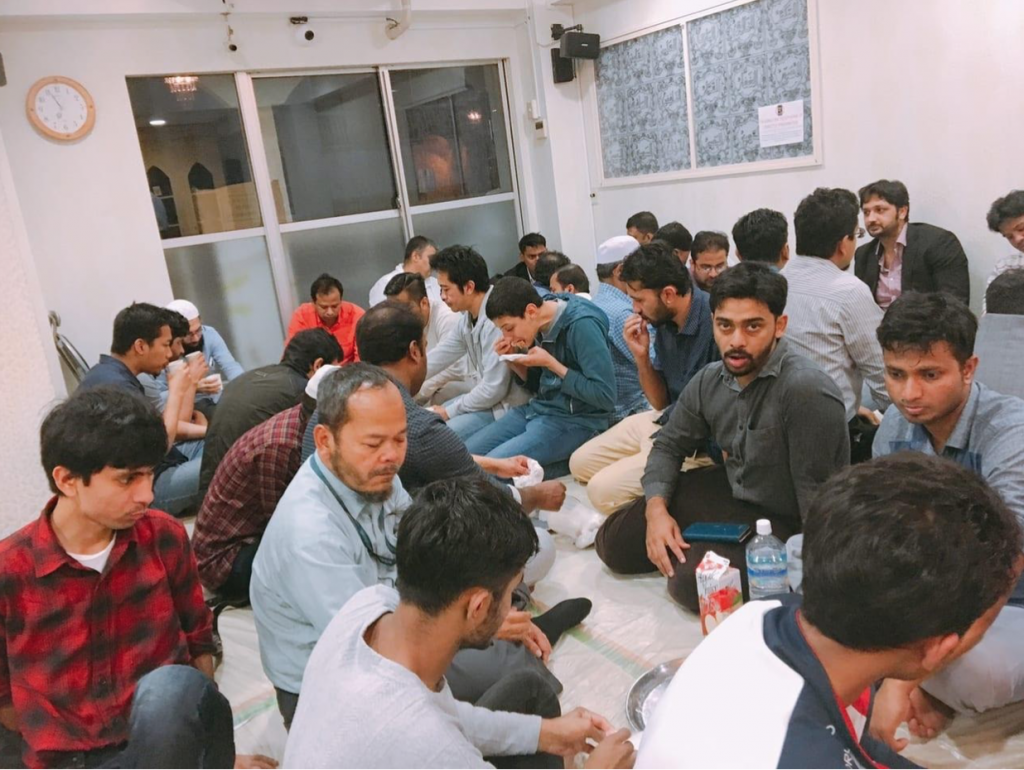
They then after about an hour start preparing to pray “Isha’a” (Evening prayer), followed by “Tarawih”, the voluntary prayer that is a specialty of Ramadan.
What Changed with COVID-19
Since the outbreak of the virus in late 2019 from Wuhan, China; many aspects of people’s lives have significantly changed.
Things that were once taken for granted -such as going out, meeting people, shaking hands, and just breathing without a barrier- became just part of the pre-pandemic era.
COVID-19 reshaped significantly how Muslims practice Islam; the grief rocked the Muslim world as they were witnessing for the first time since the mid-1800’s the cancellation of “Hajj” (Muslim’s pilgrimage) last year. Photos of the empty Grand Mosque of “Kaaba” in Mecca went viral.
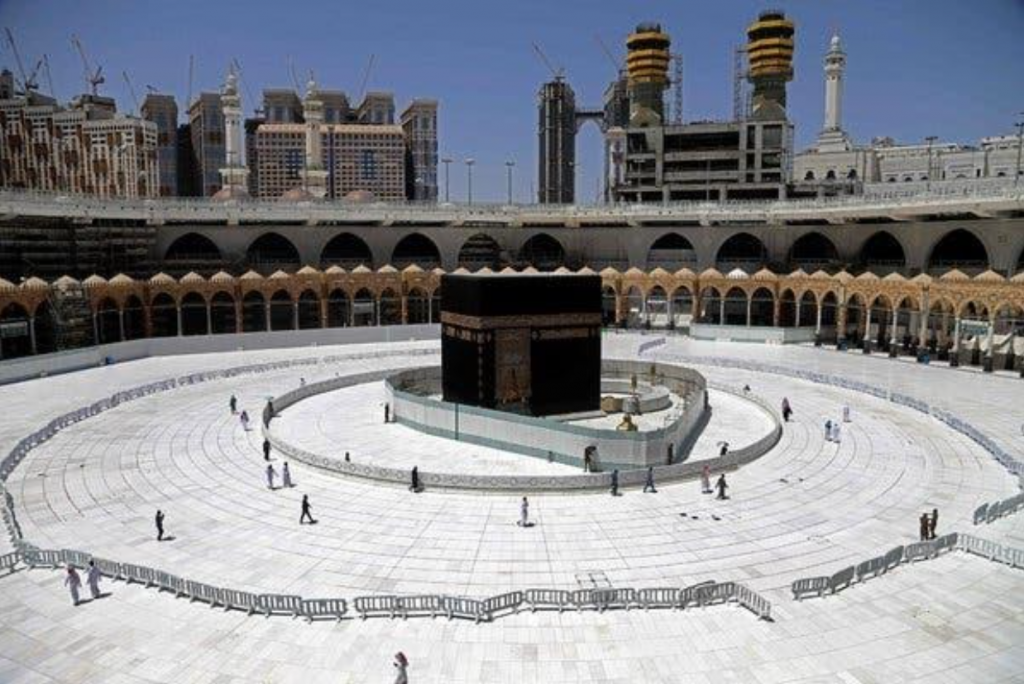
Credit: Agence France-Presse – Getty Images
Access to mosques and congregational prayers became restricted in many countries, and people can no longer meet for their celebrations and family gatherings as they used to be.
Ramadan in Japan 2021
This year, the Muslim community in Japan had already experienced COVID-19 before, it’s no longer surprising, most people are aware that it’s going to last for some time, and therefore the community was more prepared.
They astonishingly created “Ramadan TV programs”, that include broadcasting live Quran recitation, sunset call for prayer, a cooking program, Ramadan Talk show, Q&A session with the Imam Muhammet Rifat Çinar, and a “Quran for children” program.
A very good example of shifting the Ramadan Program into a safe and accessible setting is what Tokyo Camii & Turkish Culture Center did.

This huge effort is usually done by national TV in my country and other Muslim countries, we used to listen to Quran toward the final 30 mins before sunset, and then wait for the sunset call for prayer to start eating and drinking.
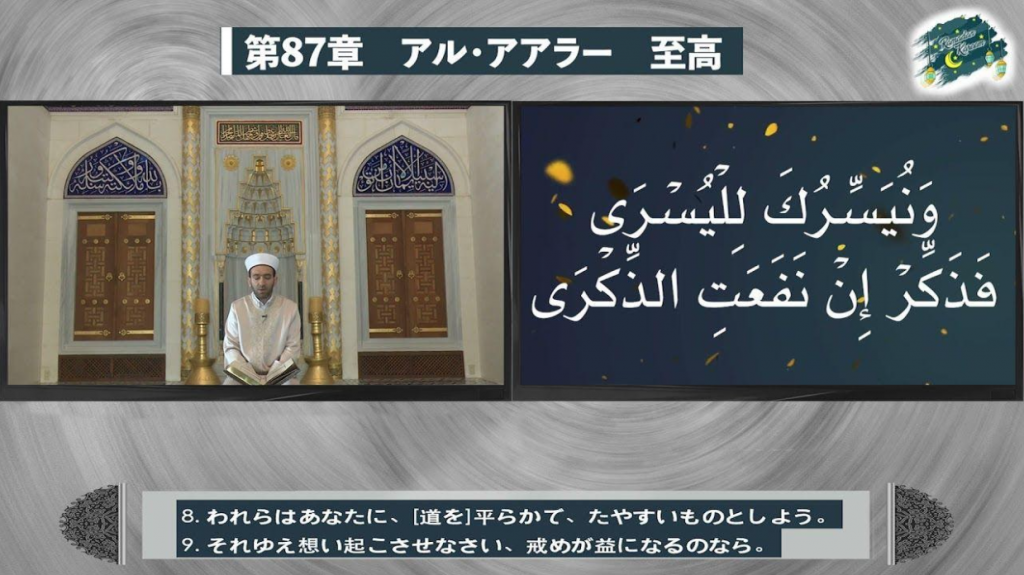
Recreating such a homelike positive atmosphere, and trying to compensate for the lack of physical activities and group meetings are highly appreciated efforts especially in the difficult times of the COVID-19 pandemic. Thanks to the efforts of Tokyo Camii and other Islamic centers and initiatives, Muslims can at least feel the “Baraka” (Blessings) of Ramadan, without risking their health and safety.
Unfortunately, this year Eid Al-Fitr’s congregational prayer on Thursday 13th, May was canceled. But Friday’s congregational prayer the next was held where many surprises took place.
But that’s a whole different story.
Stay tuned if you want to find out!
Arigato ^^
References
Ramadan Kareem from The Governor of Tokyo! Iftar Party Attended by Ambassadors and Representatives of Islamic Countries
Practices During Ramadan by Fikry Muhammad on Dribbble
History Beautiful Ramadan Traditions From Around the World
Arab countries are adapting Ramadan traditions to pandemic
Ramadan Welcome Party in Sendai 2019: Unity in Diversity | Japan Halal TV
Celebrating Ramadan during a pandemic: ‘As Muslims in Japan, we have to make the vibes by ourselves’
Islam Class in Sendai #1 – Islamic Cultural Center of Sendai
COVID-19: Tokyo Mosque ready for bittersweet Ramadan
The Hajj Pilgrimage Is Canceled, and Grief Rocks the Muslim World

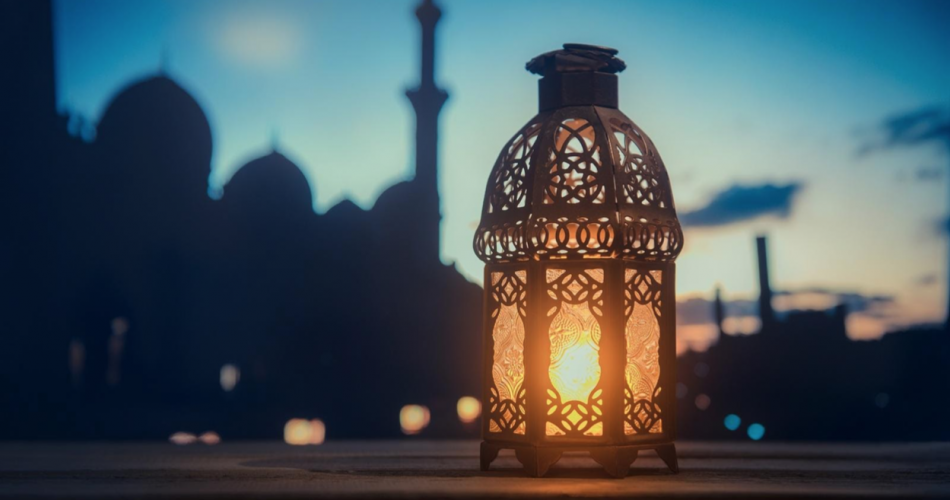
Comments